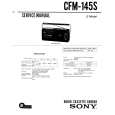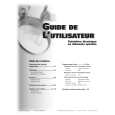|
|
|
Kategorie
|
|
Informacje
|
|
Polecamy
|
|
|
 |
|
|
Dla tego produktu nie napisano jeszcze recenzji!
Editing sequence data
Here�s how to edit patterns that you have recorded or patterns that are saved in memory. If you want to keep the changes you made to a pattern, you must perform the Write/Rename operation before you select another pattern or turn off the power.
Editing a phrase pattern (Note Edit)
When using Step Recording, you record the trigger and note number simultaneously, but cannot set the gate time in detail. If you want to be more precise, you can readjust the trigger or note number, and adjust the gate time. A phrase pattern for a synth part consists of the following three items of data. You can adjust each of these three items for each step. Trigger: whether the part will sound at this step Note number: the pitch that will be sounded Gate time: the duration that will be sounded
Step
1
2
3
4
5
6
7
8
9
10
11
12
13
14
Trigger On On Note number C2 G2 Gate time 1.25 2.00 (duration of the sound)
On On On
On On
On
F2 D2 D2
0.5 0.5 4.00
A1 E2
1.50 2.00
A2
1.00
Beat : 16
Selecting the step you want to edit
First you will select the step that you want to edit. The step to which your editing will apply is called the �target step.�
STEP REC ............................................................... 1.01...8.16
1. Press the STEP REC key (it will light). Press the [ ] cursor key until the parameter display reads �Step Rec.� The value display will show the target step. Turn the dial to select the target step. If the KEYBOARD key is off at this time, the step key that corresponds to the target step will blink. If the pattern length is 2 or greater, you can hold down the SHIFT key and turn the dial to advance by one unit of length. As an alternative to using the dial, you can also select the target step in the following ways. � Hold down the SHIFT key and press a select key to move forward or backward one step at a time. � When the KEYBOARD key is off, you can press a step key to select the step that corresponds to that key. If the pattern length is 2 or greater, you can use the select keys to switch the select LEDs (red) and move the target step in units of one length. The maximum number of steps will depend on the length, beat, and last step setting. When the KEYBOARD key is on, the step keys will not indicate the target step.
2.
Editing the trigger locations (the location of the notes)
1. 2. 3. 4. Press the PATTERN key or PART EDIT key (it will light). Press the synth part key that you want to edit. (The key will light.) Turn the KEYBOARD key off (dark). The step keys will indicate the trigger locations for the phrase pattern of the part you selected.
50
|
|
 |
> |
|



